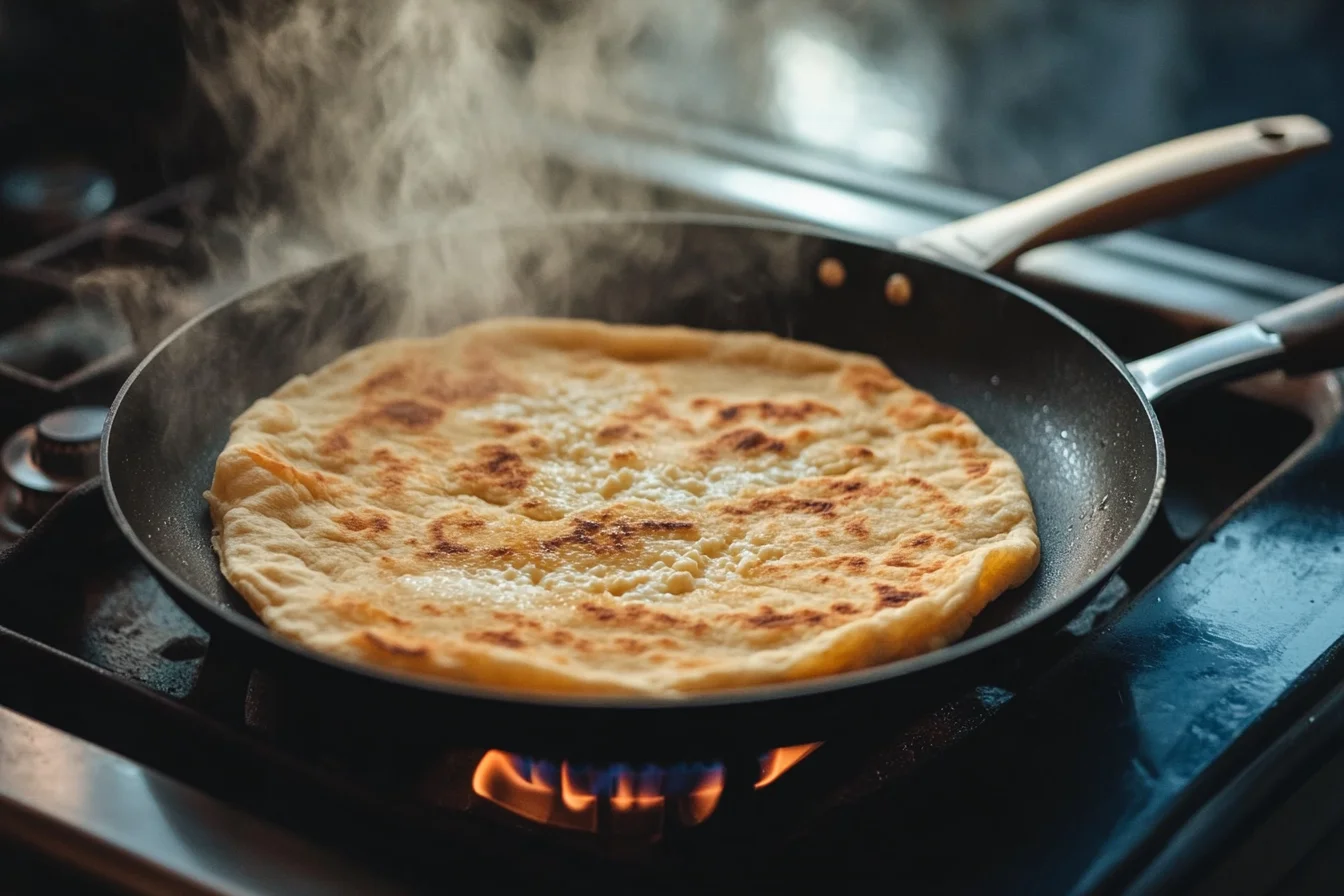Table of contents
Alright, flatbread fanatics, let’s talk about something that can be a real pain in the kitchen: cottage cheese flatbread that sticks to the pan. It’s frustrating, it’s messy, and it can completely ruin what should have been a delicious meal. This seemingly simple recipe can become a culinary challenge when the flatbread refuses to release from the cooking surface. But fear not, because we are here to explore the sticky issue of the cottage cheese flatbread recipe and give you the tips and tricks to make it work every time. So, how do we prevent these cheesy delights from clinging on for dear life?
Why Cottage Cheese Flatbread Sticks
Before we dive into solutions, it’s important to understand why cottage cheese flatbread tends to stick. The main culprit is the high moisture content in the cottage cheese. When heated, this moisture can create a vacuum between the flatbread and the pan, causing it to adhere firmly to the surface. Also, the low fat content can make it more prone to sticking. Additionally, the type of pan you use and also the heat distribution plays a very crucial role in how the flatbread behaves. Therefore, it’s very important to identify the underlying issues to understand how to prevent this problem with cottage cheese flatbread.
How to keep Cottage Cheese Flatbread From Sticking
Okay, let’s get into the solutions. There are several strategies you can use to keep your cottage cheese flatbread from sticking to the pan, and we will be sure to explore them all: Above all, the key to a perfect flatbread lies in the techniques and ingredients used.
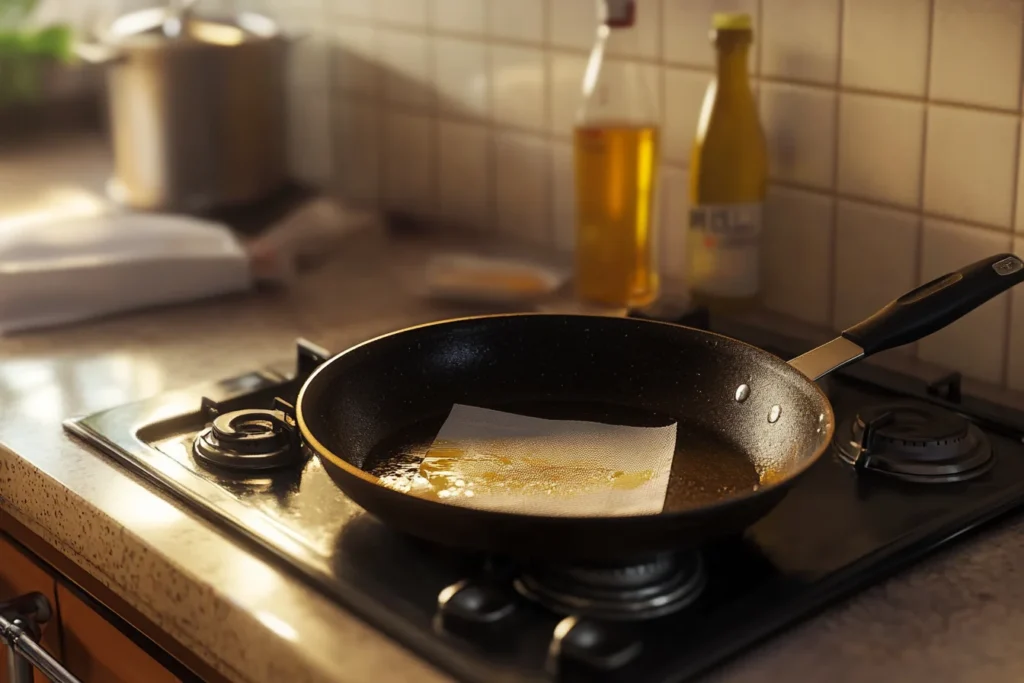
- Use a Non-Stick Pan: This is the most crucial step. A good quality non-stick pan will greatly reduce the chance of sticking.
- Preheat the Pan Properly: Make sure your pan is properly preheated before adding the batter. A hot pan helps to create a barrier between the flatbread and the surface.
- Use a Little Oil or Butter: Adding a tiny bit of oil or butter to the hot pan can provide extra lubrication and prevent sticking.
- Low to Medium Heat: Avoid using high heat, as it can cause the flatbread to cook too quickly and stick. Opt for low to medium heat.
- Don’t Move the Flatbread Too Soon: Once the batter is in the pan, let it cook for a few minutes before trying to move or flip it. This will give it time to set properly.
- Use a Thin Spatula: A thin spatula is very helpful for sliding under the flatbread to flip it without tearing it.
- Proper Batter Consistency: Make sure your batter is not too watery, or too thick, both can contribute to the sticking issue.
The Importance of a Good Non-Stick Pan for Cottage Cheese Flatbread Recipe
While all of the above techniques are helpful, having a good quality non-stick pan is absolutely crucial for making cottage cheese flatbread recipe. A well-made non-stick pan will have a smooth surface that prevents the batter from adhering to it. The non-stick coating also reduces the need for excessive oil or butter, helping to make your flatbread healthier. Moreover, the even heat distribution will allow it to cook evenly and prevents any burnt patches or uneven cooking, which can also cause sticking. Therefore, investing in a good quality non-stick pan is a must when making flatbread. Consequently, this investment will pay off, as you will be able to easily make delicious flatbreads.
Step-by-Step: Making Cottage Cheese Flatbread Without Sticking
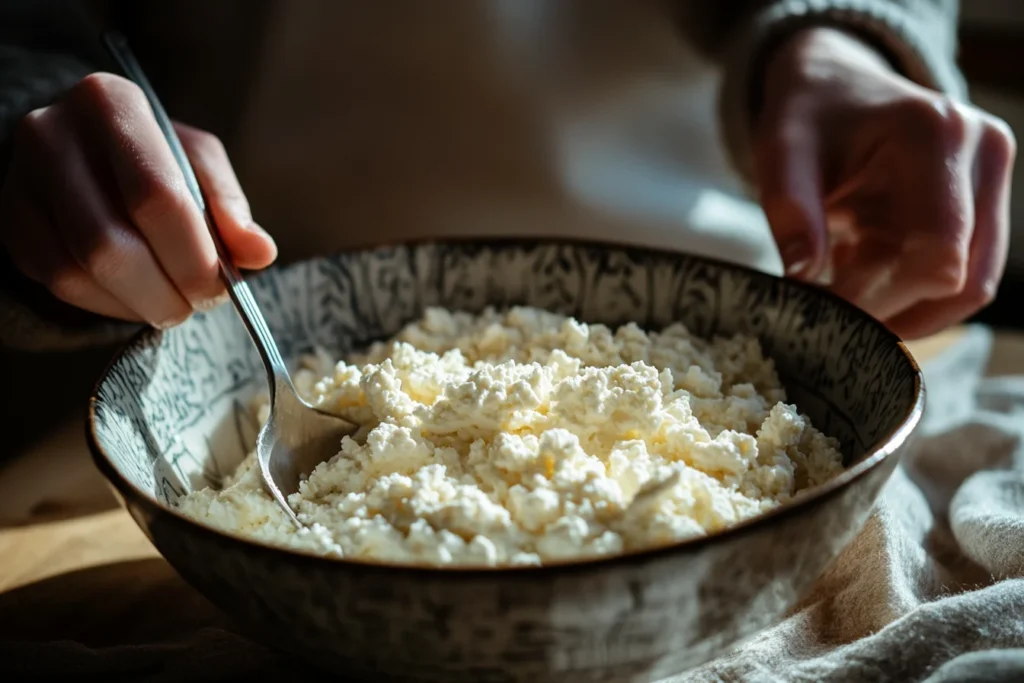
Alright, let’s get to the practical part. Here’s a step-by-step guide on how to make cottage cheese flatbread, while ensuring it doesn’t stick to the pan: Above all, the secret is to follow all the steps carefully.
Ingredients You’ll Need:
- 1 cup cottage cheese
- 1/2 cup all-purpose flour or almond flour for a low carb option.
- 1 large egg
- Pinch of salt
- Optional: seasonings of your choice
- 1 teaspoon of olive oil, or butter
Step-by-Step Instructions:
- Combine Ingredients: In a mixing bowl, combine the cottage cheese, flour, egg, salt, and any other seasoning you may like. Mix well until a smooth batter forms.
- Preheat the Pan: Place a non-stick pan over low to medium heat. Add the oil or butter and let it melt. Make sure the pan is properly heated before adding the batter. Because, if not, it may not cook well.
- Pour the Batter: Pour about 1/4 cup of the batter into the hot pan. Spread it gently with the back of a spoon to form a thin circle.
- Cook: Let it cook for 2-3 minutes, or until the edges start to look firm and the bottom is golden brown.
- Flip: Use a thin spatula to carefully flip the flatbread.
- Cook the Other Side: Cook for another 1-2 minutes, or until the second side is golden brown.
- Remove and Repeat: Remove the flatbread from the pan and repeat with the remaining batter.
- Serve: Serve immediately or store as needed. Of course, serving it immediately is always recommended.
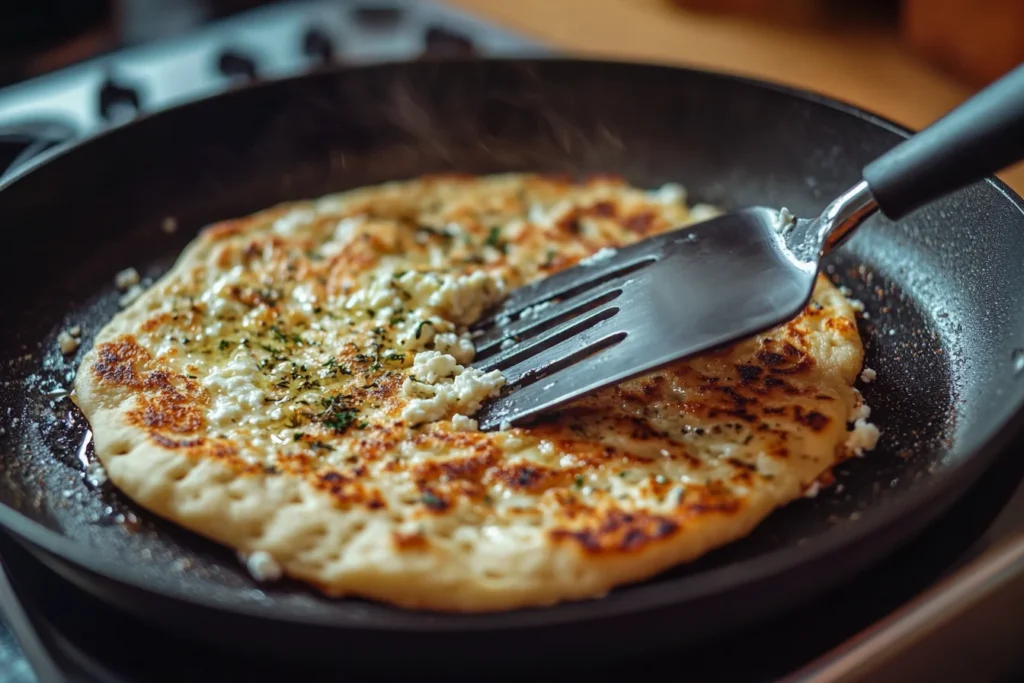
Variations and Additions to Cottage Cheese Flatbread
While the basic recipe is great, there are many ways to add your personal touch and create different variations. Here are a few ideas you can try: Not only that, but all these changes will make your flatbreads unique.
- Herb Infusion: Add fresh herbs like dill, chives, or parsley to the batter for an added layer of flavor. For example, you can try any herbs you like.
- Spice It Up: Include a pinch of red pepper flakes, or paprika to the batter for a bit of heat.
- Garlic Lover: Add some minced garlic or garlic powder for a savory twist.
- Cheese Please: Add some grated cheese, such as parmesan or cheddar, to the batter.
- Sweet Treat: Add a touch of honey, maple syrup or a sugar substitute for a slightly sweet flatbread.
- Vegetable Goodness: Add chopped vegetables such as spinach, zucchini, or onions to the batter. Similarly, any vegetable of your choice would be great.
The Nutritional Benefits of Cottage Cheese Flatbread
Cottage cheese flatbread is not only delicious but also a great source of protein. Here’s an approximate nutritional breakdown of a single serving (about one flatbread), keep in mind that these are estimated values and may change depending on the exact ingredients and proportions used: Also, it’s important to note that the values can be changed, by changing the type of flour used, and adding or subtracting different components.
| Nutrient | Amount per Serving (Approximate) |
| Calories | 100-150 |
| Total Fat | 3-5g |
| Saturated Fat | 1-2g |
| Cholesterol | 30-40mg |
| Sodium | 150-250mg |
| Total Carbohydrate | 8-12g |
| Dietary Fiber | 1-2g |
| Sugar | 2-4g |
| Protein | 10-15g |
Please remember that this table shows approximate values. These values will vary depending on the ingredients you choose to use, and also the portion sizes. Additionally, you can change the values depending on your diet preferences and requirements.
Tips for Achieving Perfect Cottage Cheese Flatbreads
Here are some extra tips to help you achieve the perfect, non-stick cottage cheese flatbreads: Since a great recipe often is in the details, let’s explore all the steps.
- Proper Batter Consistency: The batter should be thick but pourable. If it’s too runny, add more flour; if it’s too thick, add a little milk or water.
- Use Medium-Low Heat: Medium-low heat will ensure that the flatbread is cooked through evenly, without burning.
- Patience is Key: Allow the flatbread to cook for the recommended amount of time before attempting to flip it. Therefore, be patient and wait the appropriate amount of time before moving it.
- Don’t Overcrowd the Pan: Make sure to cook the flatbreads one by one, so the pan doesn’t get overcrowded, and the heat is distributed evenly.
- Use a Flexible Spatula: A thin, flexible spatula will make flipping easier and prevent the flatbread from tearing.
Exploring Different Variations of Cottage Cheese Flatbread Around the World
Cottage cheese flatbread has its roots in various cuisines around the world, with many different versions of it being made. Each culture has its own take on it, with regional variations and additions. This shows the versatility of this type of flatbread, as it can be adapted to different tastes and dietary requirements. Also, all the variations allow us to see how it can be customized. Similarly, some cultures incorporate different types of spices or herbs into the batter, while others may prefer to add fillings.
The Versatility of Cottage Cheese Flatbreads
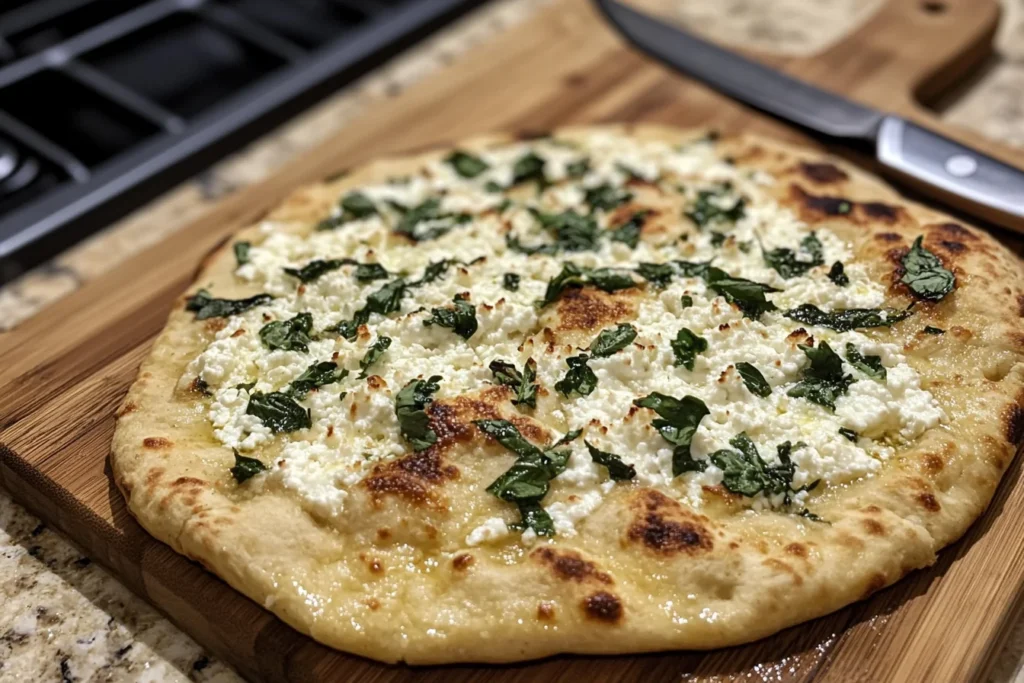
Cottage cheese flatbreads are very versatile and can be incorporated into your diet in various different ways. These can be served as a side, or can also be the base for a meal. Their versatility is one of their greatest strengths, and make them an ideal recipe for people with all sorts of dietary restrictions. It is also a quick and easy option for when you don’t have much time to cook. It is also a great meal for meal prepping. Including, that their simplicity makes them great for beginners in the kitchen.
In Conclusion: Enjoying Cottage Cheese Flatbread Without the Stick
Cottage cheese flatbread is a delicious and healthy recipe that can be a staple in your kitchen. By using the tips and techniques discussed in this article, you can easily avoid the common issue of sticking, and enjoy this treat without frustration. So, the next time you are looking for a quick and easy flatbread, try out this recipe, while keeping all the tips and tricks in mind. It is a great way to enjoy a versatile dish without the sticky mess. Finally, I hope this has provided you with a comprehensive guide to making this dish.
Go ahead, try it out, and enjoy the deliciousness and simplicity of cottage cheese flatbreads. Happy cooking!

